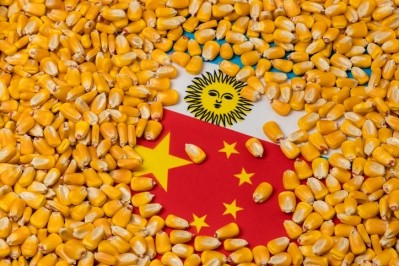Analysts: Confidence in new crops is growing and putting pressure on markets but ultimately stocks remain tight

Yesterday, we spoke to James Bolesworth, MD, CRM AgriCommodities and Peter Collier, market analyst, at that research firm, to get a clear picture of market dynamics.
Wheat
The wheat outlook is picking up, said Bolesworth, with various improvements seen in the French, US, and Russian crop conditions.
"From a wheat point of view we are getting more certainty of supply the closer we get to harvest, and that is providing some more confidence from a buyers’ point of view. Hence, we are seeing buyers taking a slight step back, and we have seen a correction in Chicago prices, European and, indeed, in Russian as well as in UK prices. There is obviously an attitude from the buying side that there is less need to be concerned than there would have been a couple of months ago. New crop supplies are imminent although a lot can still happen over the next few months. But we are getting more certainty day by day, week by week.”
In CRM Agri’s report on Monday, focusing on the prospects for new crop wheat, the analysts noted that SovEcon had raised its forecast for Russia's 2021 wheat crop to 79.3MT, up from the previous estimate of 76.2MT.
Looking to Europe the report finds, in France, some 87% of wheat is in good and excellent condition. [An earlier blog post from the CRM Agri team takes a deep dive into French wheat production].
In the US, as snow and rainfall has improved soil moisture, the condition of wheat has been improving in the major US states, further adding to new crop confidence, said the analysts.
Collier said, though, it is too early to determine wheat quality from a new crop perspective:
“Rainfall could land just before harvest and transfer a lot of bread wheat into feed wheat markets. It is too early to have too much of a view on the degree of the proportionality of wheat that will be milling versus feed at this stage. There is still a question mark over the size of the Russian spring wheat area but confidence is growing, certainly in the winter wheat conditions.”
Corn
Corn markets have been dominated by the large US-China export sales. At 3.9MT, the volume of US exports and outstanding sales is already approaching the total season US export estimates of 66MT. The increased buying has now tightened the US corn balance and increases the importance placed upon the South American corn and the upcoming corn planting.
“It has been an unprecedented year in terms of Chinese demand for corn,” remarked Collier.
He notes reservations in some quarters as to whether that is demand led or whether there are supply issues in China. “There are questions marks over Chinese corn production levels. Moving forward, we are certainly expecting import levels next year to fall marginally should the Chinese crop be bigger. Markets have probably underestimated the degree of damage to Chinese production for this season, which is resulting in this unexpected and rapid increase year-on-year (YOY) for Chinese corn imports.”
Whist the corn crop in Argentina is by no means a record, due to the adverse La Nina conditions, it has fared better than many will have expected. “We can’t say it is a great year for yields but we can say the crop is better than the strong La Nina conditions could have potentially led to,” said Collier.
They see that the first Brazilian corn crop has also held up well. Looking forward, the planting of the larger, second Safrinha crop, while it had been delayed, has accelerated of late.
“In Brazil, there is growing confidence with plantings now nearly reaching completion, but with the larger proportion being planted beyond the safe planting window this year, there is more risk for yields in the Safrinha corn crop with the pollination window being pushed back. So, certainly, we are still going to be in a weather market with a strong focus on South American weather until, at least, May or June.”
Oilseeds
Soybean markets have continued to trade sideways over the last month.
That market consolidation, or drift, said Bolesworth, is arising from the fact that the market lacks fresh, fundamental news. However, the upcoming USDA Planting Intentions Report alongside pending official US crop condition scores should shake things up somewhat, he added.
Monday’s report from CRM Agri showed the cooling of oilseed rape prices comes as global vegetable oil and crude markets have fallen back from the recent highs. While old crop markets remain tight, there is a growing volume of imports now arriving from Australia, easing the European deficit.
Moving forward, while prices are easing, there are plenty of risks for oilseed rape production next season.
Collier noted that, across the EU, there have been issues with oilseed rape crop damage, particularly in France.
And there is declining acreage in the UK, along Ukraine: “The trend for a having a relatively large deficit of oilseed rape in Europe is certainly going to continue into next season.”












